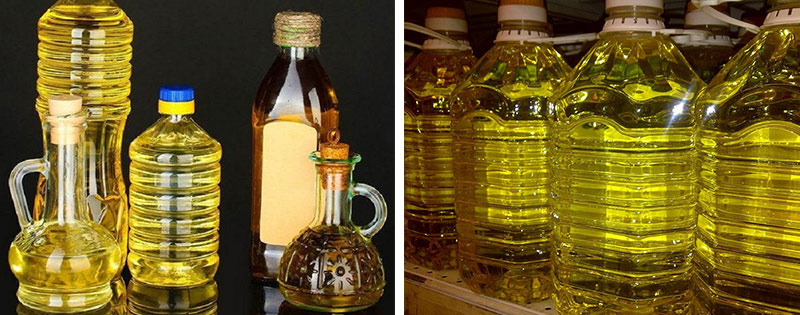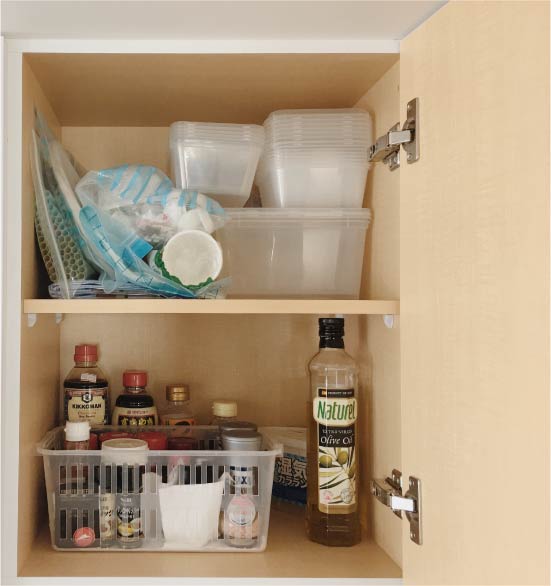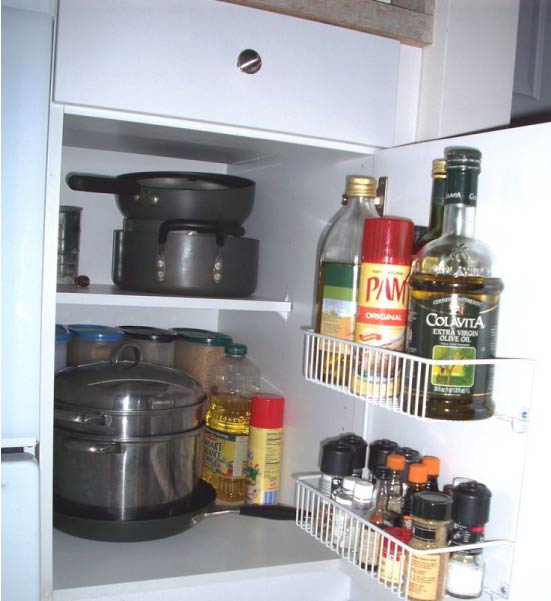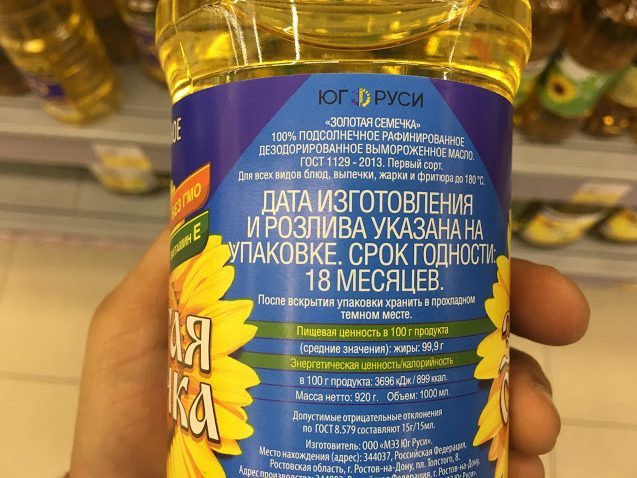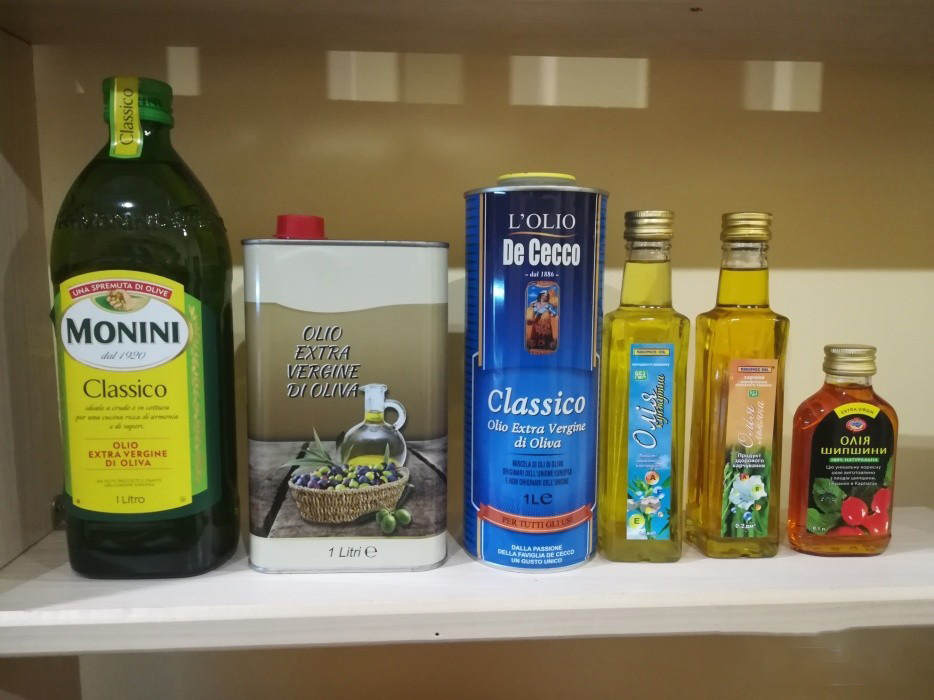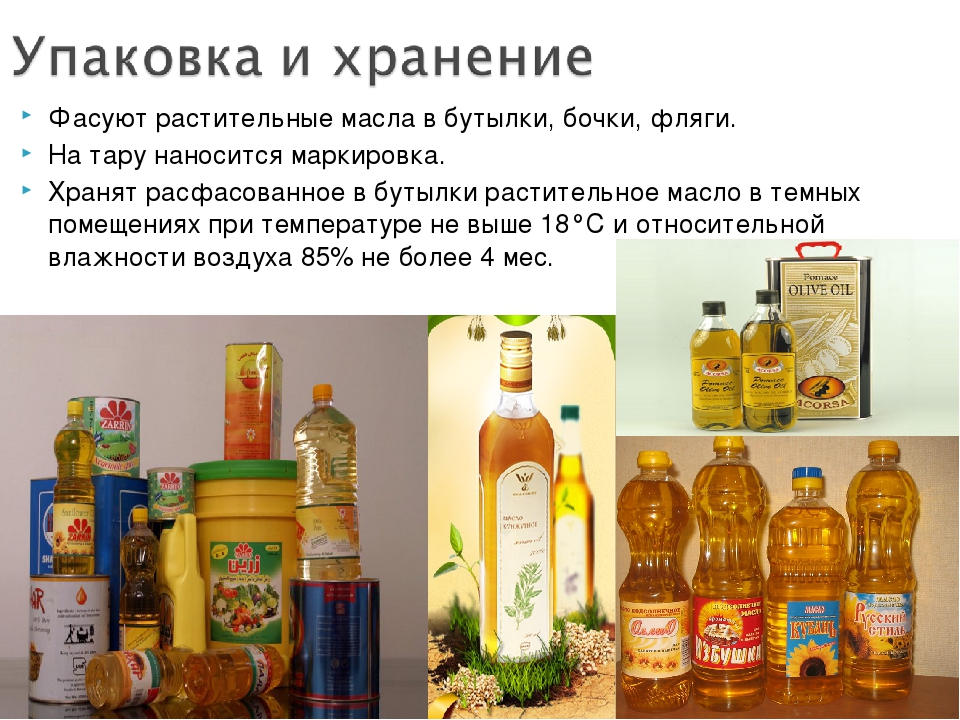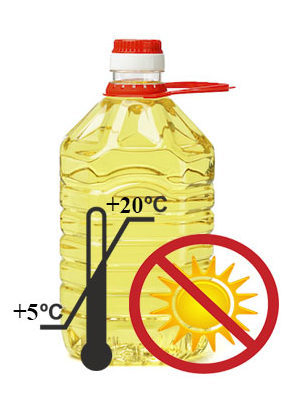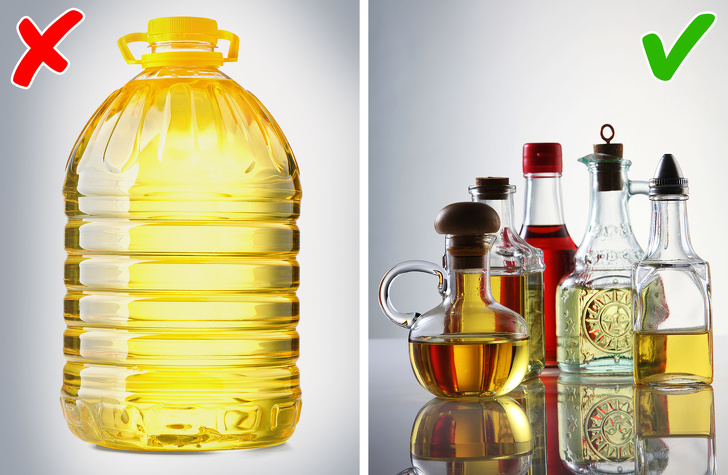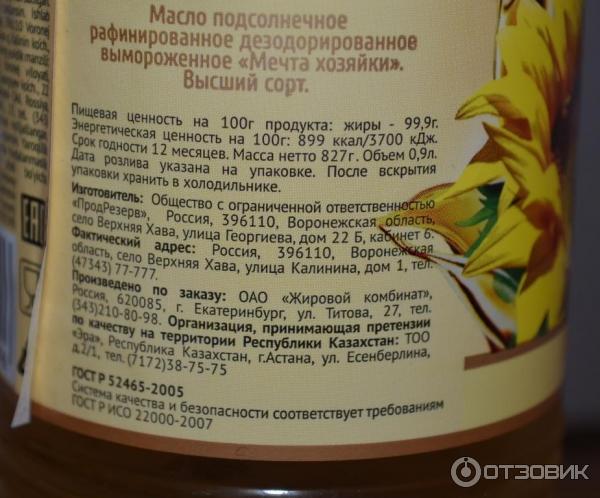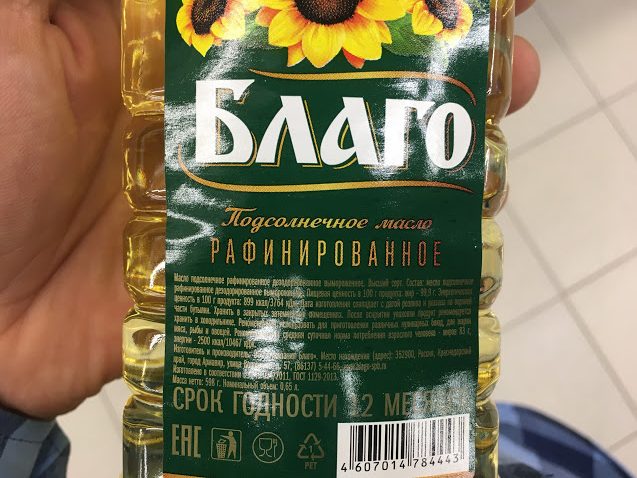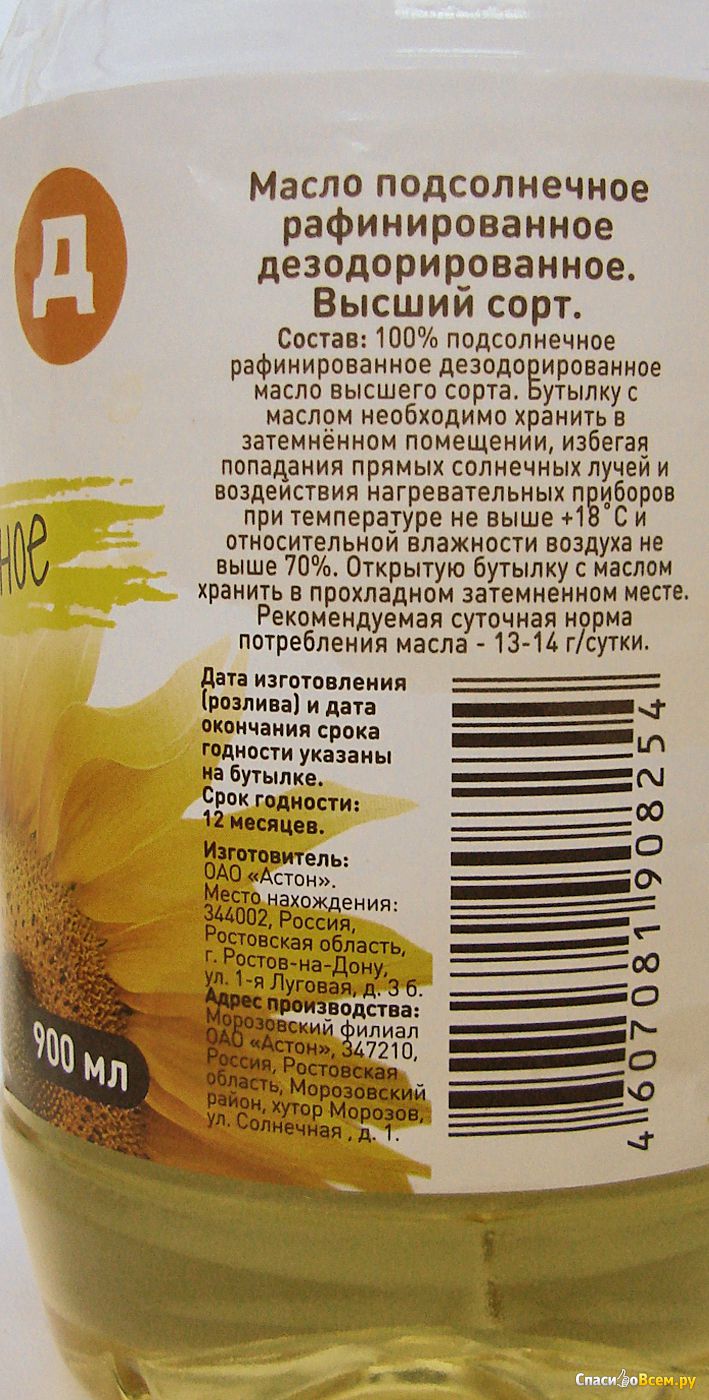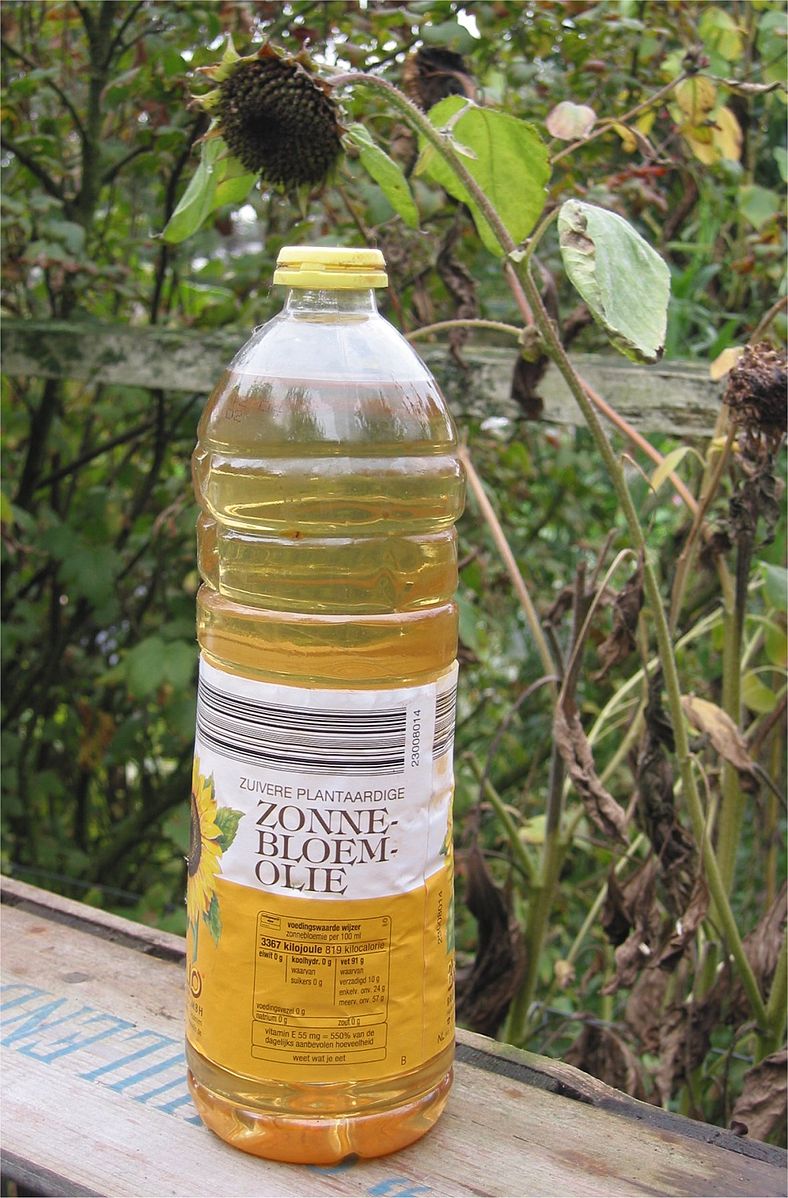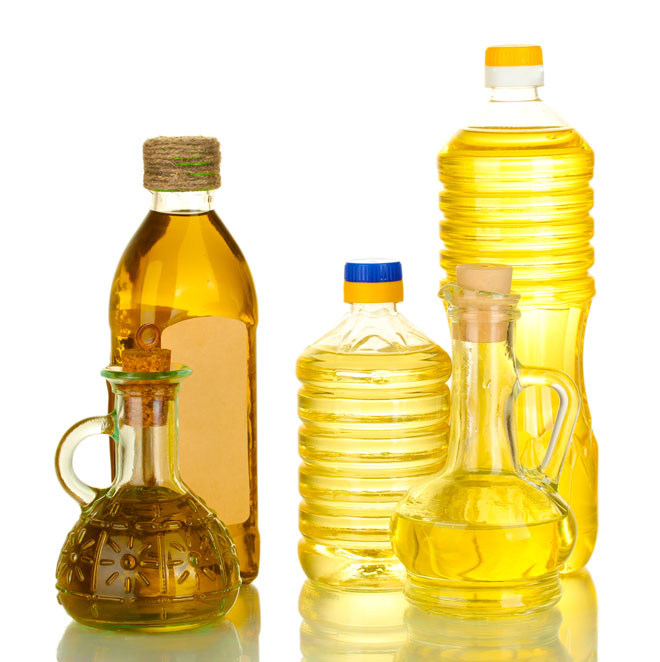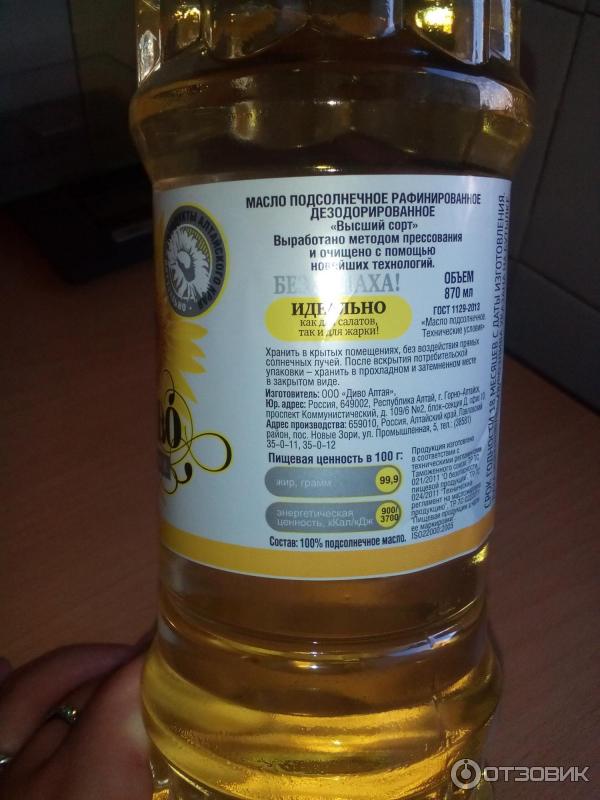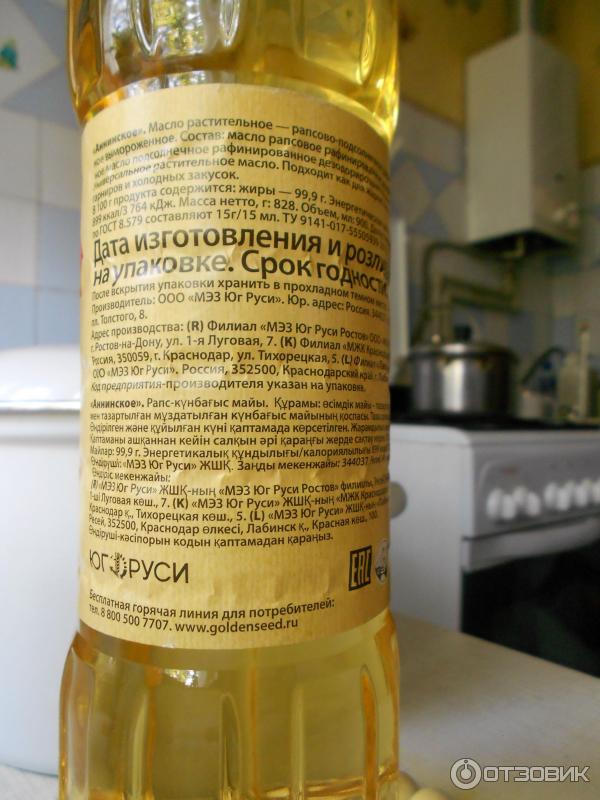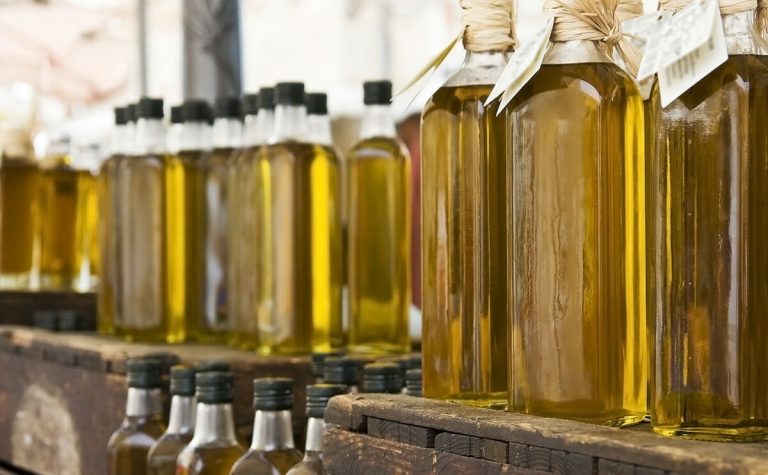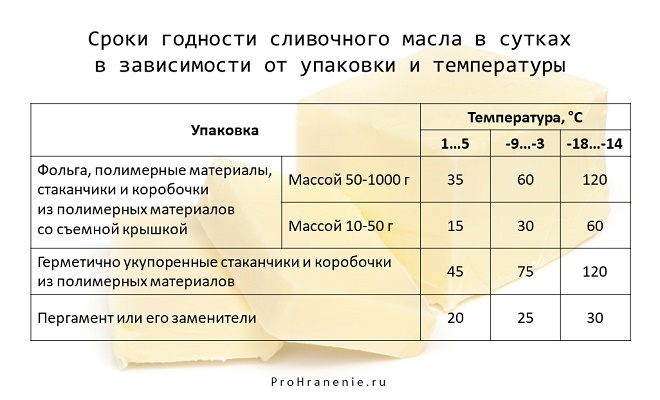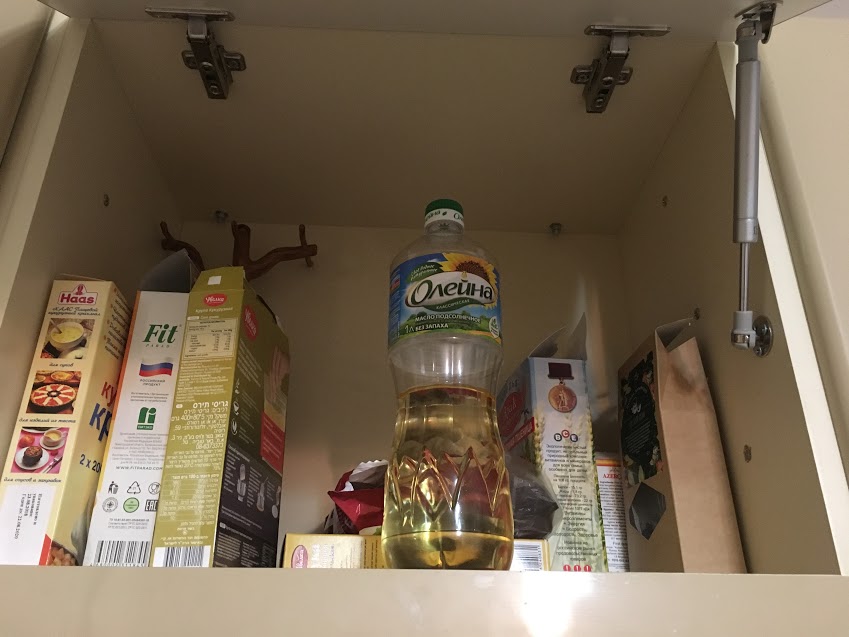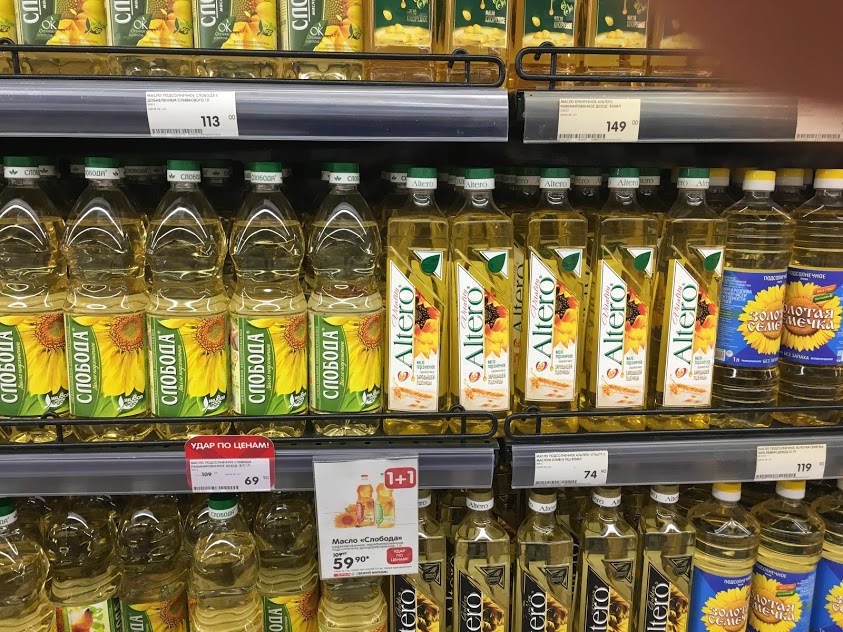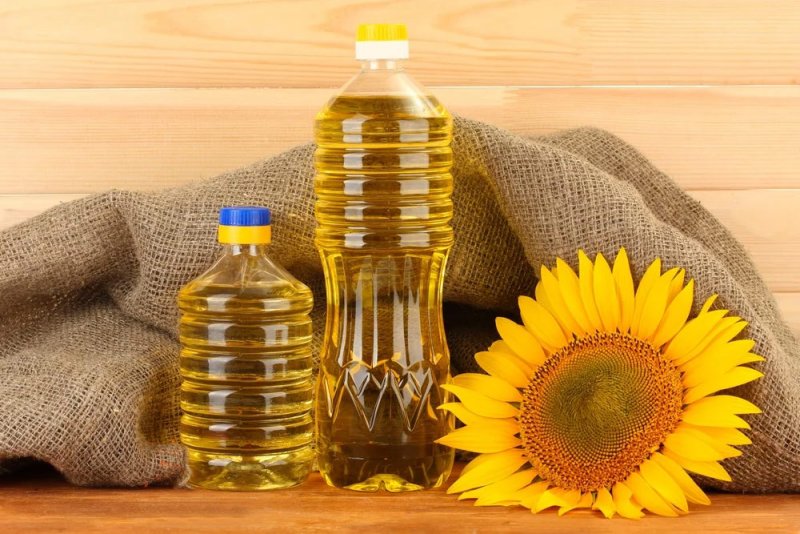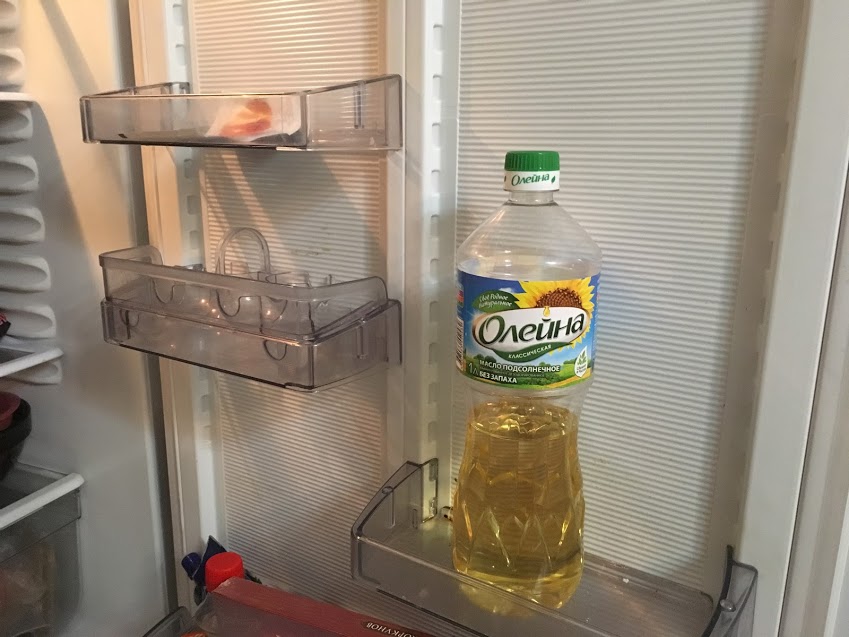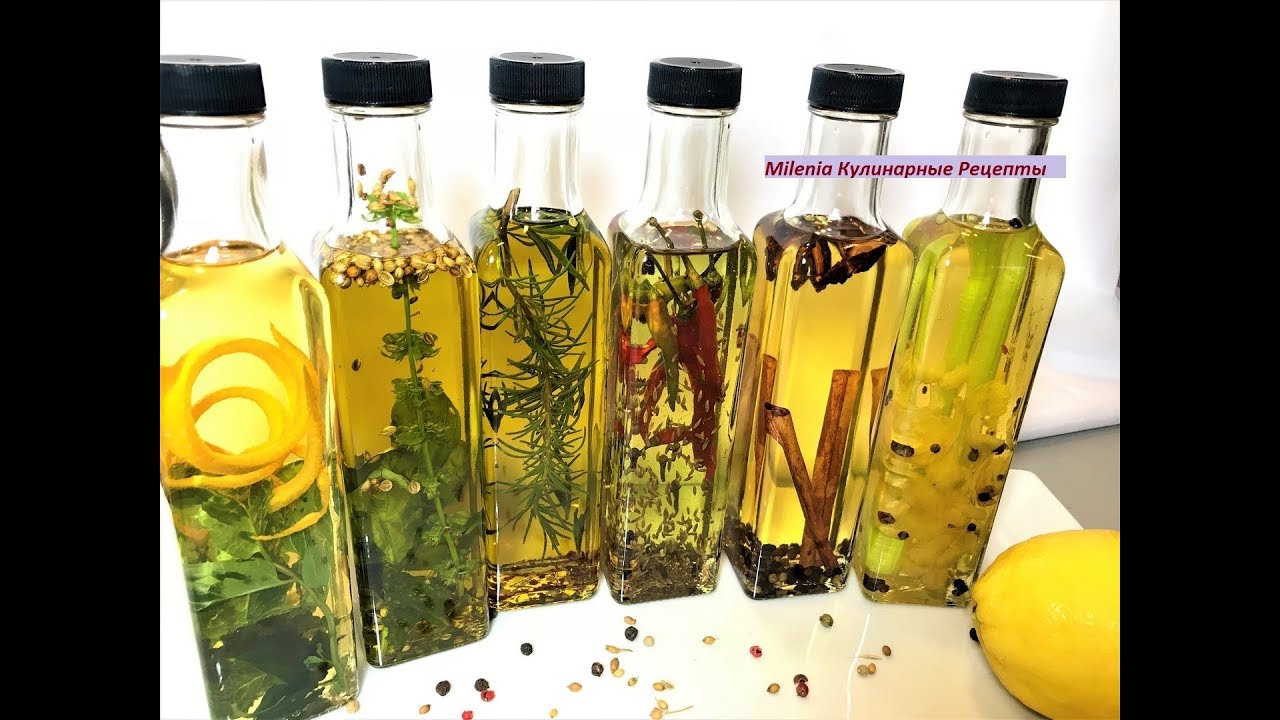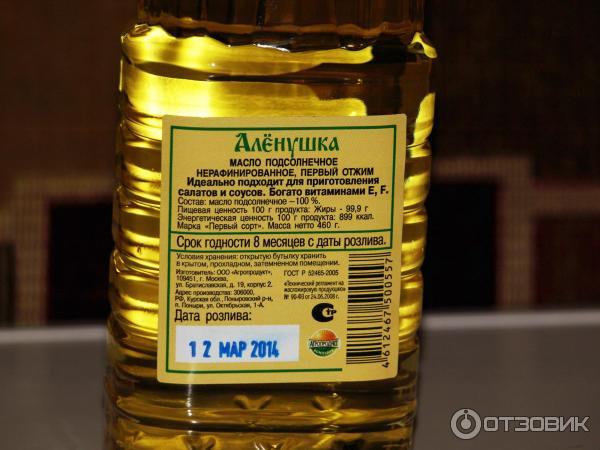How to store sunflower oil
Many housewives wonder why so much attention is paid to storage issues. After all, theoretically, such bacterial cultures as in dairy products should not develop in vegetable oil. But in fact, if the correct storage conditions are not provided, then oxidative processes will begin to develop under the influence of heat and sunlight or some external factors. The end products of fatty acid oxidation are toxic to humans, and a number of studies confirm their carcinogenic nature. In addition, even if a large amount of primary and secondary oxidation products did not have time to accumulate in the oil, its taste changes significantly under the influence of these processes.
All of these carbonyl compounds and alcohols are responsible for the rancid taste and odor. Therefore, the storage conditions of any sunflower oil presupposes protection from sunlight, oxygen and high temperatures. This is the only way to preserve the original organoleptic characteristics.
In order to protect the oil from exposure to sunlight, it is best to store it in an opaque container, or at least in a dry and dark place that is cool enough. The storage temperature for any type of oil is from + 8 ° C to + 20 ° C. Humidity should be normal, up to 60-75%. Typically, the oil is stored in a kitchen cabinet. But in summer, temperatures can rise there, beyond the specified range. In this case, the oil should be transferred to the refrigerator in advance, where it can be kept on the door.
Today in most supermarkets, sunflower oil is sold in plastic packaging (glass containers are usually used for more expensive and valuable oils). In this polymer factory packaging, oil can be stored for no longer than three months, and then it is poured into a dark glass bottle. But metal containers, contrary to common misconception, are not suitable for these purposes, since they may contain toxic substances that easily react with the active components of the oil.
Terms of use
Many people believe that the period of use of refined and unrefined sunflower oil is unlimited. This is a mistake as any species is prone to rancidity. And this is especially true for unrefined oils.

Therefore, before you buy a bottle of vegetable oil, look at the label. Compare the production date with the current date considering the shelf life. Here's what you need to follow:
- Most often, vegetable and sunflower oils are stored for 1 year.
- If the bottle with the product is opened, then it is necessary to use it up within 2 months, if it is refined oil. For unrefined, the term is reduced to 1 month.
- To maximize the preservation of all the nutrients found in unrefined sunflower oil, after opening the bottle, it should be stored in the refrigerator.
- The problem is that in vegetable fats, under the influence of oxygen and sunlight, the formation of carcinogenic substances occurs. And these substances, getting into the human body, cause cell mutation and lead to an increase in the risk of oncological diseases.

Important!
The oil can only be stored for a longer period if the bottle remains sealed in its original factory condition.
Vegetable sunflower oil is a valuable product that is recommended to be consumed regularly. To get the most out of it, buy it in small quantities and keep it in the right storage conditions.So there will always be a tasty and healthy product on your table.
How to tell if the oil has gone bad
There is a lot of cheap product on store shelves that has gone rancid or musty, which consumers are accustomed to, considering it normal.
The defining traits of expiration are taste and aroma.
If, during tasting, you feel astringency, light sourness, it is dangerous to eat such oil.
A slight bitterness is the norm for a fresh extract, but a pronounced unpleasant aftertaste indicates spoilage.
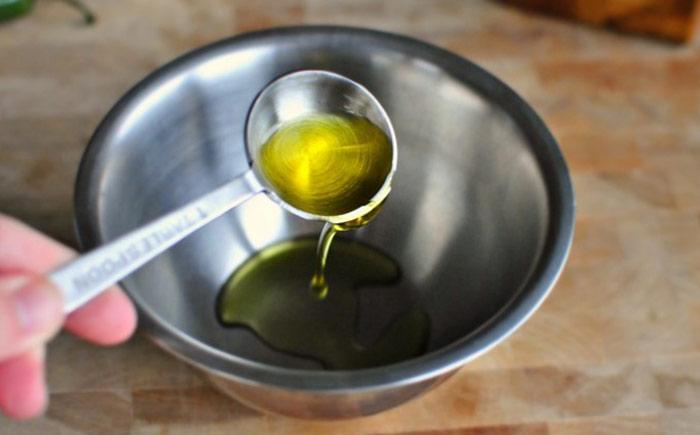
The expiration odor is similar to the following:
- Plasticine, pencil lead.
- Stale linen.
- Vinegar or rubbing alcohol.
- Nail polish.
Another sign is the excessive fat content of the oil.
It is slowly absorbed into the skin, the consistency is unpleasant when touched. Such a product cannot be used even for cosmetic purposes.
Olive extract should not be consumed after the expiration date: signs may indicate moldy olives during processing or oxidation of the oil, which will negatively affect the state of the digestive system or affect metabolism.
The sediment in olive oil is mistaken for signs of poor quality raw materials, but this is a characteristic feature of the product after cold pressing.
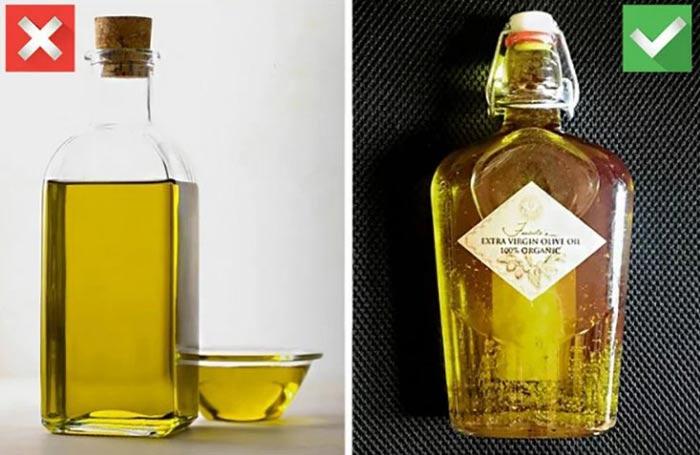
Storage of vegetable oil
The modern food industry offers us a wide variety of vegetable oils: olive, flaxseed, coconut, peanut and many others. Each type of oil has its own characteristics when storing.
Earlier on Bambino Story we told you how to store oils and what rules you need to follow.
Now we suggest that you consider what the proper storage of vegetable oil should be, as well as pay attention to the optimal storage conditions for the most common types of oil, which are often present in our kitchen.
How to store olive oil
The most revered vegetable oil is olive oil. This oil is also called the beautiful word "provencal". It is made from light and dark olives. It is very delicate, soft and aromatic. Olive oil is indispensable in the preparation of various salads, meat and fish dishes.
Olive oil contains a sufficient amount of polyunsaturated fatty acids, which play an important role in metabolism. Thanks to this, olive oil is very beneficial for overweight people. It is also widely used for various beauty treatments at home.
Therefore, the question of how to store olive oil is very relevant for many people.
First of all, it is important to remember the most important rule - after opening a bottle, use up oil within a month. Don't buy oil for future use
Store oil in a cool, dry place.
Choose oil in a dark glass bottle with a narrow neck and a tight-fitting cap - this will reduce oil contact with air. We do not recommend you to fry something twice in the same oil, as the secondary heat treatment of the oil leads to the formation of carcinogens harmful to the body.
Surely, you have come across such an unpleasant sensation as heartburn in your life. Very often, heartburn is caused by foods fried in deep fat, when they are fried in the same oil for several hours in a row. This brings savings, but not benefits.
How to store coconut oil
Recently, coconut oil has been extremely popular in Russia. Our women use it for both culinary baking and beauty treatments. How to store coconut oil? This oil should also be stored in a dark glass container in a cool and dry place. If you have purchased coconut oil in ampoules and in a box, then do not rush to get rid of this package.
Store this box in a cool, dark place.Of course, if the shelf life of coconut oil is coming to an end, then if you want to extend this period, you can put the oil in the refrigerator. But it is still impossible to store coconut oil for a long time, it gradually turns yellow, which means it loses its beneficial properties. Coconut oil that is bright yellow is considered spoiled.
Only a slightly yellowish tint is allowed.
How to store flaxseed oil
The healing properties of flaxseed oil can hardly be overestimated. Two teaspoons a day is enough to experience its beneficial qualities. Our figure benefits from taking flaxseed oil, our complexion improves, our hair and nails are healed.
Usually, nothing is fried in linseed oil, since the high temperature turns linseed oil into drying oil. Flaxseed oil is consumed without heat treatment. How to store flaxseed oil? Like any other oil, flaxseed oil should be stored in a cool, dry place. You cannot store in the refrigerator - it will thicken.
Do not leave a bottle of oil open - air is as enemy to oil as sunlight.
How to store sunflower oil properly
If you bought sunflower oil for future use, you should store it at a temperature not higher than +20 degrees in a dark place, since when exposed to sunlight, the oil loses its beneficial qualities and becomes an absolutely unhealthy product.
Many people buy sunflower oil for future use in large containers of 3-5 liters, of course, it is economical, but it is not recommended to store sunflower oil in a plastic bottle after opening. To preserve the benefits and freshness of sunflower oil, it is better to pour it into glass containers made of dark glass and leave in a cool, but not cold place. You can store the oil in a cellar or pantry, and so that it acquires a pleasant aroma and taste during storage, you can add a clove of garlic and a pinch of herbs - rosemary, thyme, basil to the oil so that the prepared salads acquire a very pleasant aroma and taste.
Is it possible to store sunflower oil in the refrigerator - this question interests many housewives. It is possible, but you should not leave the oil in the refrigerator for a long time, the optimum storage temperature for sunflower oil is at least +5 degrees, so it is better to leave it on the door and use it as needed.
The shelf life of sunflower oil is considered unlimited, but this is far from the case. Yes, unopened oil can be stored for several years in a dark, dry room with a suitable temperature, but at the same time it gradually loses its beneficial properties and acquires a characteristic rancid taste. If you feel it, you should not eat such a product, it can cause poisoning and even provoke the appearance of cancer cells, since it contains carcinogens.
Many people love fries, but is it possible to store sunflower oil after potatoes or chicken have been fried in it? According to the instructions, the sunflower oil after frying should be used within 6 hours, so if you are going to make French fries or chicken in batter, or other dishes, try to take a container that will hold exactly as much oil as you need for frying, so that it was not a shame to throw away the main part of a useful and expensive product. It is not recommended to store sunflower oil after frying, so try to fry all foods in one fries oil so that they are not only tasty, but also healthy.
Homemade flavored sunflower oil for salads should be stored in glass bottles, it does not contain preservatives and quickly starts to taste bitter, so you should buy it in small portions. And in order to better preserve its taste and emphasize the rich aroma, you can add a whole bay leaf to the oil, which has preservative properties and will help preserve the taste and freshness of the oil for a long time.
Running with varicose veins
Aerobic exercise and running in particular are very beneficial to health.But is it possible to run with varicose veins? What to do if you have varicose veins, and you are so used to morning jogging? We invite you to find out all the details and details.
If you liked this post, please leave a comment or
subscribe to RSS.
About expired product
The shelf life of sunflower oil may not coincide with the shelf life. Simply put, the end of the shelf life does not mean at all that it cannot be used for its intended purpose. The main condition for the suitability of any food product is health safety.
Expired sunflower oil is allowed for sale in various areas, depending on how many months it is overdue and subject to quality compliance with accepted standards. If the plant complex has completely lost its nutritional value, then it can be used for technical purposes and the paint and varnish industry. In the household, the expired herbal remedy safely enriches the diet of pets.
For the purchase to be useful and justified, pay attention to the manufacturer's data on the packaging, including the date of bottling and end use, recommendations regarding the location and storage conditions.
How much can be stored?
There are two types of sunflower seed oils: refined and unrefined. The first will have a longer shelf life than the second.
Refined oil is chemically refined. After this procedure, the content of free fatty acids, phosphorus and moisture in the finished product decreases, but the stability increases up to 12 and even up to 24 months.
For salads, it is better to use unrefined sunflower oil, and only refined for frying.
If you pick up a bottle of sunflower oil from the store, you will probably see longer shelf life on the refined options label.
This is due to the fact that during the chemical processing, manufacturers add special antioxidants. After refining, the shelf life increases.
Remember that the bottle indicates the expiration date of the oil in a sealed container. The countdown starts from the date of its bottling, which must also be marked in a conspicuous place.
Once you have opened the bottle, it is best to use the product within 3-4 weeks. Store the unopened package in the refrigerator.
Optimal storage capacities
A quality product is sold in dark and preferably thick glass bottles. In such containers, the beneficial properties and taste of olives are preserved for a long time. No manufacturer will pack this product in plastic containers. In it, olive oil will quickly lose all its valuable properties. Even pouring the seasoning into a plastic container is undesirable. The best storage option is a tinted glass bottle.
Dark and thick glass
In such a bottle, the olive product is protected from sunlight and any foreign odors. Natural oil in an unopened original container, under optimal storage conditions, will retain all its beneficial properties for more than 1 full year. Even an opened container made of dark thick glass will not allow the product to deteriorate for a long time.

Tin packaging
Usually, olive oil is sold in such a container of not the best quality. It is not always convenient to use a tin can, but there is no harm from tin. You can pour the olive oil into a glass bottle, preferably dark in color.
Stainless steel
You can pour olive oil purchased from a supermarket into a special stainless steel container with a dispenser. True, such a container has only a steel plate. Inside the container there is an ordinary glass bottle that does not interact with the product. Dispensers are on sale in household goods stores.
How to store olive oil: general guidelines
When organizing product storage, it is important to consider several basic nuances. Above all, limit its contact with light and oxygen.
Air and light rays destroy vitamins and antioxidants and accelerate the oxidation process, resulting in a bitter taste.
To protect the product from light, store it in dark containers such as tinted glass bottles or cans. If it's packed in a transparent container, wrap it in foil or place it in a tight paper bag. To protect the oil from contact with air, the lid can be tightly closed immediately after use.
Another important storage rule is compliance with the temperature regime, which should be + 12 ... 25 ℃. At a lower temperature, white flakes form in the oil - sediment
This not only spoils the appearance of the product, but also negatively affects its taste.
 To minimize oil contact with air, transfer to a small container and be sure to close the lid tightly immediately after use.
To minimize oil contact with air, transfer to a small container and be sure to close the lid tightly immediately after use.
The best storage place is a cellar or basement. In such rooms, a stable optimum air temperature is maintained and light does not penetrate there.
At home, the best place is a cool and dark pantry or kitchen cabinet, located away from the stove, microwave, and other appliances.
Can I keep olive oil in the refrigerator?
No.
Wanting to keep olive oil as long as possible, housewives keep it in the refrigerator. Despite the fact that the refrigerator is designed to keep food fresh, it is worth knowing that it has the opposite effect on some of them.
This applies to olive oil. When stored in the cold, white flakes are formed in it, it takes on a bitter taste, and its shelf life is significantly reduced. That is why you should not use a refrigerator to preserve the product.
How to choose the right one when buying
The most delicious is the olive oil made in the Mediterranean countries - in Italy, Greece or Spain. It differs in taste and color. Greek olive spice has a honey flavor, golden hue and fruity aroma. Spanish is slightly bitter and resembles fresh olives. The oil from Italy has a mild pleasant aftertaste and a light herbal aroma.
This product is also made in Turkey, Israel, France, Syria. The flavor and color of olive oil depends a lot on the variety of olives and the climate in which they are grown. This product is sold in dark glass bottles or in tin packaging. The plastic container may contain refined or diluted oil.
This product is used for preparing salads or for frying. Extra virgin oil is sometimes compared to fresh fruit juice. It is mechanically squeezed from whole olives. There are no additives or preservatives in it, and the acidity is not higher than 1 percent. This oil is used in ready-made dishes and for dressing salads. You cannot fry on it.
Virgin oil is obtained from the second cold pressing. This product has a pleasant taste and aroma, and the acidity is not more than 2 percent. Used for dressing vegetable and fruit salads.
Refined olive oil - refined oil. Usually meat, fish, vegetables are fried on it. This product does not have the same intense flavor and aroma as Virgin Oil. The acidity should not exceed 3 percent. Manufacturers often write on the label what their product is for. When buying olive seasoning, you should always look at the production date. Unlike wine, this product loses its valuable properties over time. Typically the highest quality olive oil has a shelf life of 18 months.
It is completely impossible to see the color of a product in a dark glass bottle. You can only consider oil at home by opening the plug. A quality product has a golden color. If the seasoning is greenish or gray, then it was made from overripe olives.
Things to remember when buying olive oil from the supermarket:
- before you buy your favorite gas station, you need to study the entire range;
- high-quality salad dressing should be in a dark glass bottle;
- it is better not to take a product that was spilled more than a year ago;
- the manufacturer and the packer must be in the same country;
- it is better not to react to the action, usually in this way they try to sell goods with an expiration date.

If a product of poor quality was originally purchased, then there is no point in worrying about its safety. You should always remember that good olive oil is expensive, and it is sold in branded tinted glass bottles.
Oil classification

In all the variety that is offered to the consumer today, you need to choose the right quality oil for different purposes:
- Raw-pressed or so-called first pressing is a "live" oil obtained from sunflower seeds, preheated to 50 ° C. Then they are passed through a press, which causes the release of oil. The filtered liquid oily substance not only has a pleasant taste and aroma, but also retains the maximum of all valuable nutrients.
- Unrefined - differs from the previous one by additional mechanical cleaning, which, however, takes some of the useful properties.
- Hydrating the oil deprives it of some of its taste and smell, takes away the sediment.
- Refined is obtained by multi-stage purification, as a result of which all nutrient biochemical structures are eliminated. This applies to vitamins and minerals. But it is ideal for heat treatment.
- Frozen sunflower oil is also refined from wax structures. This makes it almost colorless and as transparent as possible.
Important!
Each type of oil requires its own storage conditions.

When buying a bottle of oil, pay attention to the label. Here you will find all the data you need to understand how a particular product was obtained by technological means.

It is very important to understand that each type of oil is used for its own purposes. So, raw-pressed and unrefined are ideal for use without heat treatment (they are added to salad or cereals)
All others are suitable for frying, stewing, baking and other types of heat treatment. The absence of any substances other than pure fat does not allow the substance to smoke and smoke when heated.
How to choose the right one
When buying, in addition to the price, you need to look at the appearance of the oil, the integrity of the packaging, the shelf life, the composition, and only after making sure of its quality, purchase.
A few rules for a successful purchase:
purchase only in dark places, counters should be as far away from direct sunlight as possible;
a product that has been in the store for a long time and has a shelf life approaching the end of its shelf life may have a bitter taste and be harmful to health;
the color of the product should also be taken into account, the presence of cloudiness indicates that the product has deteriorated.
Before proceeding with the choice, it is recommended to determine the target purpose of the product. Also, when choosing, it is worth studying the information on the label, since many manufacturers use a publicity stunt to lure customers and increase sales. For example, the inscription “does not contain cholesterol” is one of them, since it cannot be found in vegetable fats. And the content of vitamin E, as the inscription on the package sometimes says, is also absurd, since it is present in all types of vegetable oil.
Unrefined
Suitable for making salads and cold snacks, as it contains a large number of useful ingredients due to the absence of further processing after cleaning. It has a pleasant taste and aroma. Over time, it does not precipitate and does not acquire bitterness.

Refined
It is used exclusively for frying; it is undesirable to use it unprocessed.Due to complete purification, it can contain various impurities that form a sediment and negatively affect the taste. It is not characterized by a pronounced odor, but it has a pleasant taste and a bright shade.
Raw
Crude sunflower oil is purified only from large mechanical impurities. It is not stored for long and cannot boast of an attractive appearance, but it is endowed with a lot of healing properties. It is used for the preparation of sauces, salads, and the taste clearly resembles sunflower seeds.
Hydrated
Differs in a pronounced taste and aroma. Produced by pre-cleaning and hydration. It is heated, passed through warm water in a sprayed state and left for a while. Proteins and other slimy components precipitate, and the finished hydrated oil is collected from the surface.
Frozen
This product has been freeze-dried to recover the natural wax, which gives the oil a turbidity. Such a product loses almost all of its beneficial properties and is a mixture of triglycerides, but retains its original transparency. Does not foam or smoke when heated. It has no taste and smell, but it has a long shelf life and has a good presentation. It is recommended for people on a dietary diet.
Where to store
The next step is choosing the right storage space. It is characterized by signs:
- Dark, protected from natural light (although artificial light is also harmful to fatty acids).
- Temperature - 12-16C, minimum - 2-3C, maximum - 20-25C.
- Humidity is low.
Can I keep olive oil in the refrigerator?
The answer is you can, but this will not extend its shelf life. On the contrary, prolonged exposure to low temperatures negatively affects the effectiveness of the positive effect of the product on the body.
Fatty acids crystallize at rather high temperatures - 2-5C, so white flakes appear in the bottle and the color changes (to white, with a yellowish or greenish tint). This is a normal physical process. The same happens during freezing (freezing point). The extract becomes liquid at room temperature and is quickly absorbed into the skin.

Some people try to figure out whether the product freezes in the refrigerator or not. But such an experiment will not determine the quality, and freezing can damage important organic compounds, which will, again, reduce consumption.
The best option is to send the extract to a dark cabinet shelf or closet. If kept in the refrigerator, then no more than 2 months.
How to store it correctly
Most housewives will answer the question about the ideal place for storing butter absolutely correctly - this tasty and healthy dairy product should be kept in the refrigerator. However, it is necessary to take into account a number of nuances:
- the shelf on the door is not the most suitable place, because when you open and close the refrigerator, the temperature will constantly change;
- a vegetable drawer at the bottom of the appliance will allow the product to remain soft enough to spread comfortably on sandwiches;
- the coolest place in the refrigerator will maximize the shelf life.
In the manufacturer's packaging
Most often, the manufacturer for portioned bars uses foil as packaging. In this case, the purchase can be moved to the home refrigerator in the same form in which it was lying on the store shelf. This also applies to those situations when the manufacturer has chosen parchment, a plastic box or other opaque container for packaging. Goods purchased by weight, wrapped in plastic wrap, must be transferred to an oil can or wrapped in a suitable material.
In an oil can
When choosing an oiler, it is better to give preference to materials such as porcelain and stainless steel.If the container is made of plastic, the walls will be permeable to the odors of the surrounding food. In addition, washing can be difficult.
The basic requirements for a container for storing butter are as follows:
- opaque walls;
- tight-fitting lid.
In a properly selected oiler or container of suitable characteristics, butter is stored in the refrigerator for up to 3-4 weeks.
In foil
To prevent the delicate taste from spoiling, foil is great as packaging. The product wrapped in this material will not lose its properties for up to 20 days.
In parchment paper
Paper is breathable, so the product will not suffocate. At the same time, the parchment will prevent airing. For storage, the piece is wrapped in 2 layers. The quality will last up to 10 days.

